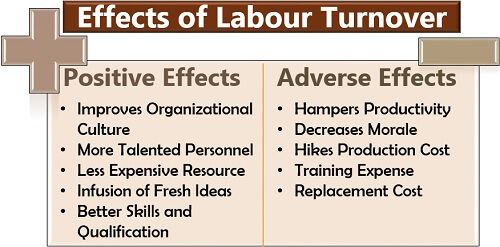

Thus, it does not include gains from financial or other activities, such as interest income, gains on the sale of fixed assets, or the receipt of payments related to insurance claims. Sales turnover is restricted to revenue generated from operations. The measurement can also be broken down by units sold, geographic region, subsidiary, and so forth. The revenue included in this calculation is from both cash sales and credit sales. The concept is useful for tracking sales levels on a trend line through multiple measurement periods in order to spot meaningful changes in activity levels. The calculation period is usually one year. Because of the many variables affecting turnover, benchmarks for acceptable or ideal turnover vary.Sales turnover is the total amount of revenue generated by a business during the calculation period. Understanding the causes of employee turnover can help businesses make the necessary changes to maintain their workforce at the desired level. Negative feelings towards boss or management.Lack of opportunity for growth or career development.Some of the most common reasons for turnover include the following: What’s bad is when turnover happens for negative reasons and/or when turnover happens at an unexpected rate. There are many reasons why employees leave a department or an organization, and while some reasons for turnover are negative, some turnover is expected and perfectly normal. For example, an insurance company should not base their analysis of organizational turnover on the expected turnover rate of a fast food restaurant, and vice-versa. high turnover is how actual turnover compares to a typical or expected rate, which can change depending on industry, job type, company size, region, and more-and that rate is very rarely zero. While low employee turnover is the goal for most organizations, what determines low vs. Turnover is natural for any organization. Involuntary turnover is when an employer chooses to terminate an employee or remove them permanently from the group in question, possibly because of poor performance, toxic behavior, or other reasons. And remember, if you are calculating turnover within a single team or department, turnover does not have to mean employees who leave the organization-just the group you’re analyzing. This can happen as a result of better job opportunities elsewhere, conflict within the workplace, disengagement, and more. Voluntary turnover is any instance in which an employee actively chooses to leave.
TURNOVER MEANING FREE
Get a Free Price Quote Voluntary Turnover vs Involuntary Turnover

Incorporating these kinds of temporary shifts in workforce numbers will skew your turnover rate higher than it really is. The equation would read as follows: (26/140)*100 = 18.57ĭo not include temporary hires or employees who go on temporary leave in either factor of the equation. Multiply that number by 100 to calculate the employee turnover rate.įor example, if you have an average of 140 employees working during a month’s time and 26 employees leave, your turnover rate would be around 18.6 percent. How Do You Calculate Employee Turnover?ĭivide the sum total of the number of employees that leave within a specific period of time (month, quarter, year, etc.) by the average number of employees that work within the selected time frame. While an organization usually measures the total number of employees who leave, turnover can also apply to subcategories within an organization like individual departments or demographic groups. Employee Turnover What Is Employee Turnover?Įmployee turnover, or employee turnover rate, is the measurement of the number of employees who leave an organization during a specified time period, typically one year.


 0 kommentar(er)
0 kommentar(er)
